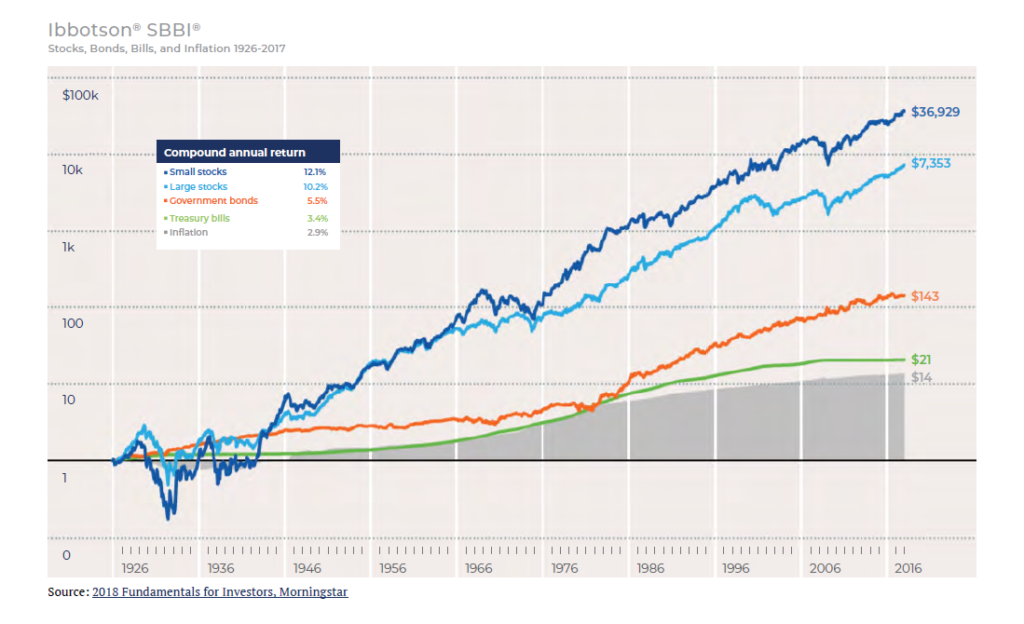
We’ve said it before and we’ll say it again: CPF shouldn’t be your only retirement plan. Whether you’re in your 30s, 40s or 50s, you can, and should, secure more retirement income streams to ensure a financially comfortable retirement. If you’re looking for a straightforward and cost-effective investing strategy to grow your retirement wealth over the long term, consider exchange traded funds (ETFs).
Think of an ETF as a basket of stocks, bonds or other investment assets that you can buy or sell on a stock exchange, just like shares of any publicly traded company. ETFs are a form of passive investing. Their goal is to mirror the performance of a market benchmark such as the US’ Standard & Poor’s 500 (S&P 500) index for example.
The S&P 500 is a collection of 500 stocks intended to reflect the overall return characteristics of the US stock market as a whole. It has typically delivered 6% – 8% annual returns over the long term even after inflation, which is a decent return for any invested capital.
Other than stock indexes, there are ETFs that track bond indexes and even gold indexes! ETFs have exploded in popularity over the past years. Today, there are more than 6,000 ETFs globally and they hold a combined value of US$5.02 trillion in assets.
Should ETFs have a place in your retirement planning playbook? Absolutely.
What ETFs bring to your portfolio
- ETF fees are significantly lower and more transparent than what traditional, actively managed funds charge. Less money paid to your fund manager means more money for your retirement.
- ETFs allow you to start small. Even with a small investment however, you are still investing in tens or even hundreds of different stocks when you buy an ETF. Buying the iShares U.S. Technology ETF gives you exposure to 151 US technology and IT companies for instance.
- They’re diversified. Since you’re buying stocks from many different companies with an ETF, even if one particular stock performs poorly, you still have the performance of your other stocks to bank on.
- With ETF investing, you will likely receive close to market returns, especially if your ETF closely replicates a country index. Market returns is the average returns that all the companies in an economy deliver.
Your ideal asset allocation
Before you start investing for your retirement, you need to know what to invest in. This is where asset allocation comes in. Asset allocation is an important part of creating and balancing your investment portfolio to ensure you have an appropriate asset mix of stocks and bonds, as well as other asset classes should you prefer to hold them.
As you read this today, you may be planning to retire in the next 15, 25 or 35 years. That’s a relatively long investment horizon, no matter what your desired retirement age is. This longer investment timeframe also allows you to take on more risk to help improve your investment returns, meaning you can afford to be more heavily invested in stocks as you build up your retirement nest egg.
The importance of diversification
The reason is simply that stocks have almost always outperformed other asset classes over the long term. Let’s take US stocks for instance. According to data from Ibbotson® SBBI®, over the past 91 years (from 1926 to 2017), US stocks have returned twice as much as long-term government bonds and nearly three times as much as US Treasury bills.

But wait a minute, global stock markets posted negative returns for 2018. That’s right, and this example illustrates the inherent volatility of the stock market – there are bound to be upswings and downturns when you invest in stocks, which is also why your portfolio shouldn’t consist 100% of stocks.
You need to balance your stocks with some bonds to diversify your portfolio so as to protect yourself in the case of a market crash. This is because stocks and bonds tend to have a negative correlation. Simply put, when stocks are down and underperforming, bonds tend to perform well and go up.
To broaden your portfolio diversification even more, consider investing in a mix of asset classes as well. Apart from stocks and bonds, you can include real estate (via real estate investment trusts or REITs), gold, and other assets in your portfolio. For investors who prefer to construct their own portfolios, always ensure your portfolio is diversified across asset classes and companies.
For a better understanding of an asset allocation that’s suitable for your risk appetite and investment objectives, click here to view your recommended ETF portfolio.
This article is adapted from the Syfe e-book “Retire With Confidence”.




You must be logged in to post a comment.